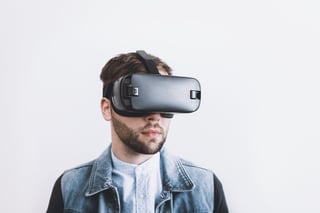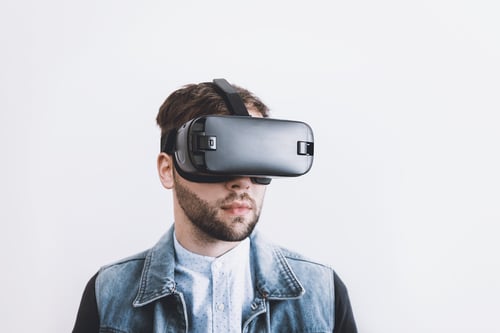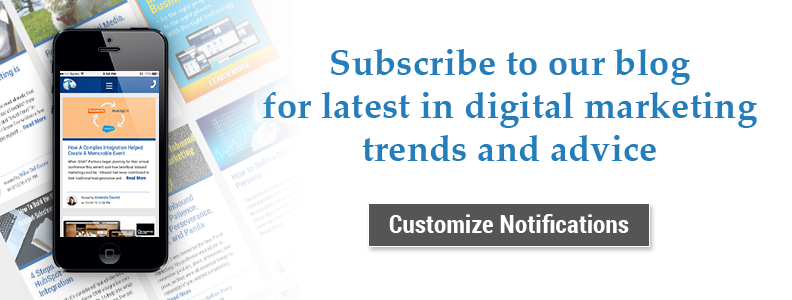The State of Virtual Reality in Digital Marketing

For years now, proponents of virtual reality (VR) have made grand claims about the disruption that VR technology will bring and how close we, as a society, are to realizing its benefits in everyday life. One such claim came from Facebook founder Mark Zuckerburg who predicted we would have one billion people in virtual reality; we are currently only at one percent of this goal. So where is virtual reality technology? And what does its outlook in digital marketing look like?
State of VR Technology

When discussing the state of VR technology we want to break it up into three main areas: hardware, software, and adoption.
Hardware
In regards to hardware, virtual reality is still facing a host of technical challenges. These technical challenges include latency, sound syncing, comfortable use over extended periods, and much more. Additionally, virtual reality technology requires a lot of hardware making it immobile and ineffective for out-of-home applications. These technical issues breathe life into popular concerns such as potential health problems.
Software
Virtual reality's adoption relies heavily on an active community of creators developing applications and uses for virtual environments. How long are you going to use a VR headset if its application feels like a one-time gimmick? In terms of software and the communities developing these applications, the state of virtual reality looks good and is only going to get better.
Adoption

As mentioned previously, actual virtual reality adoption numbers have fallen significantly short of predictions—about 990 million short of Zuck's estimate. Although virtual reality adoption is slow and substantially lower than expected, there is hope. As we've seen with other new technologies, there is a critical mass that leads to a drastic influx of adoption. If virtual reality developers continue to iron out technical and ethical issues and empower creators, you can expect virtual reality adoption to increase in tandem.
The Current Status of VR in Digital Marketing
While virtual reality has not yet met the grandiose promises of optimistic techies (self-included), VR has found success in digital marketing. Below, I am going to break down a couple of ways VR is already being utilized in digital marketing and relay provide some use cases for each.
360 Video. Though it may be considered the most basic version of VR, 360-degree video presents an exciting opportunity to marketers. It doesn't require an enormous budget making it a viable starting point for VR digital marketing. Companies are primarily using 360 videos to convey experiences. These experiences include skydiving, campus tours, and even luxury vacations.
Virtual Sky
Oculus Go
Education. One of the more universally-liked applications of virtual reality is education. VR enables the creation of new and immersive educational experiences and for a fraction of the cost. Virtual classrooms have no overhead. Field trips only cost what they take to make one time. And this education isn't limited to middle school students. Companies have already begun incorporating it into their marketing, offering hands-on demonstrations, "face-to-face" training seminars, and more.
Lowe's Holoroom
Apollo 11 VR
The Outlook of VR in Digital Marketing
Virtual reality is seemingly boundless. The worlds created are not bound by physics, enabling a new-wave of experience and storytelling. In the future, expect VR to shift away from isolated experiences into inter-connected and social experiences. 77% of VR users already want more social engagement and we can guess a big inhibitor of adoption is the lack of social applications. These social experiences will not be limited to one application or community, but instead, will bleed across multiple worlds.
VR is a user-centric technology focused on providing a unique world of experience to each individual. For us marketers to succeed, we need to be more user-focused than ever. We need to view digital marketing through a new lens and approach content creation from an experience-oriented mindset. Stay up to date on the cutting edge of digital marketing by subscribing to our blog, aptly titled: the cutting edge.
